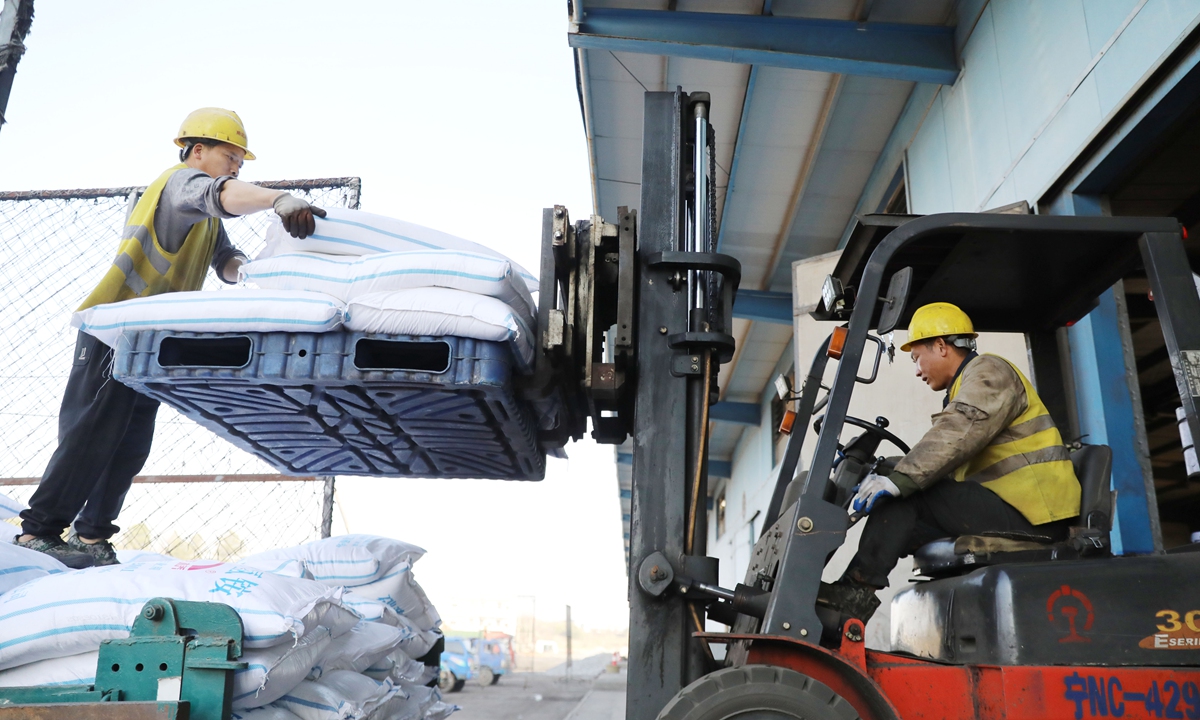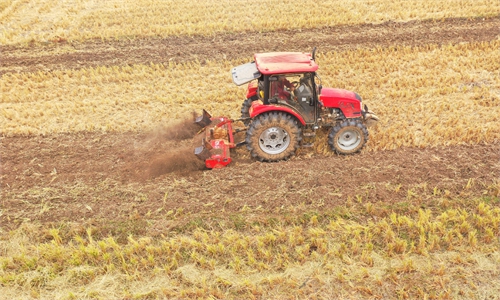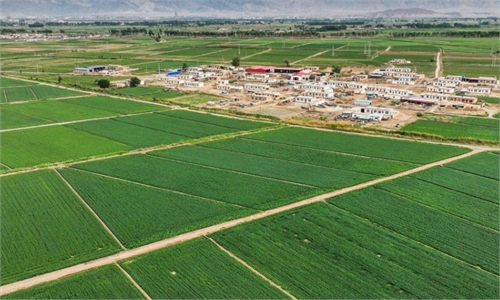China to further solidify grain security following bumper 2022 harvest: government official

Workers transport fertilizer at a railway station in Central China's Hunan Province on January 31, 2023 to prepare for the upcoming spring plowing period. China's State Council executive meeting on January 28 called for preparation work for spring plowing to lay a solid foundation for the nation's grain harvest. Photo: cnsphoto
China's grain output surpassed 1.3 trillion jin (650 billion kilograms) for eight consecutive years in 2022, providing a "better, stronger and more stable rice bowl" for 1.4 billion Chinese amid complicated global uncertainties, while the nation will further consolidate grain security, a senior official from agriculture and rural affairs ministry said on Tuesday.
Tang Renjian, director of the Central Rural Work Leading Group Office and minister of agriculture and rural affairs, made the remarks in response to media questions over the country's grain security situation, following the newly released No.1 Central Document on Monday.
Affected by factors like the pandemic, natural disasters, and fluctuating global grain prices, China's bumper harvest provided solid support for stabilizing prices and market expectations, Tang said, adding that the nation will further shore up grain security.
The No.1 Central Document listed nine aspects of key work that China will undertake in 2023 to push rural revitalization, as the first mission is securing grain and important agricultural products' supplies and stable production.
The nation will set a target to stabilize the planting area while striving to increase production and focus on yields. For instance, more projects targeting to increase the yield for soybeans and corn per unit will be carried out and developing saline land for soybeans, while further promoting the production to exceed the 1.4 trillion jin.
The document underlined efforts to keep annual grain production over 650 billion kilograms, expand the acreage of soybeans and oil crops, and develop modern agriculture infrastructure.
In 2022, the domestic soybean output reached 40.57 billion jin, 7.78 billion jin more than the previous year, a year-on-year increase of 23.7 percent, data from the National Bureau of Statistics showed. The annual output of corns reached 554.41 billion jin in 2022, up 1.7 percent over the previous year.
From the perspective of implementing new measures, China will strengthen infrastructure construction while strictly managing the use of available land, aiming to turn the 1.546 billion mu (103.1 million hectares) of farmland into high-standard land and better guarantee food security through adopting modern agricultural technologies.
The nation will also strengthen agricultural-use equipment, including promoting research and development for key technologies, revitalizing the seed industry and accelerating self-reliance in relevant sectors.
From a policy perspective, the nation will further improve mechanisms to guarantee the income for farmers, such as continuing to raise the state's minimum purchase price for wheat and improve the subsidies for soybean and corn.
As the spring farming season gets underway, Chinese authorities have vowed to ensure the supply of fertilizers and to stabilize prices. For instance, the National Development and Reform Commission, the top economic planner, and 13 other departments have issued a notice on ensuring fertilizer supply and stabilizing food prices.
Global Times



